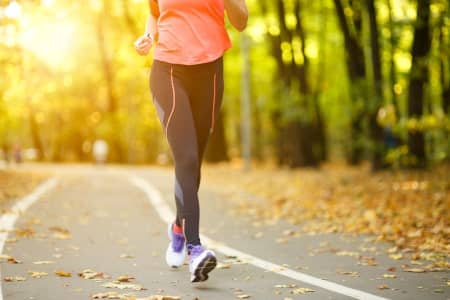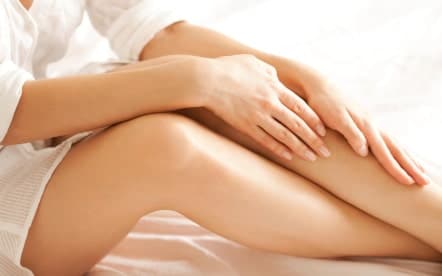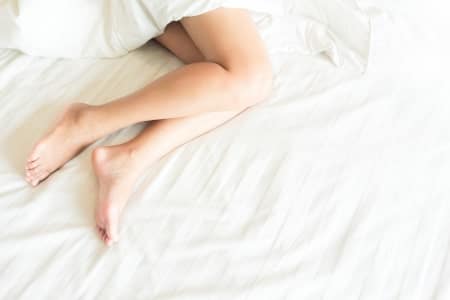Restless legs disturb your sleep
Restless Legs Syndrome (RLS) is a disorder that primarily occurs in the evening or at night when you are sitting or lying down. Your legs feel irritated and inflamed. This unpleasant feeling can be reduced by moving your legs briefly. RLS is not in itself painful, but it can be very uncomfortable because it leads to an urge to move your legs. As the symptoms are the worst in the evening and at night, they can seriously disturb going to sleep and your sleep.
Restless legs syndrome is fairly common. Of the population, 2 to 5% have RLS, and women twice as often as men. The syndrome can start at all ages, but the average age when the complaints start is 27. RLS usually gets worse as you get older.
Sometimes there are periods when the complaints decrease or disappear. In most cases, however, restless legs syndrome becomes worse, to the point that the complaints occur nearly every day.
Cause of restless legs
The exact cause is not known. It is suspected that RLS occurs as a result of disturbed operation of specific nerve cells in the brain that control muscle movements. A shortage of dopamine, which is produced by the nerve cells, can play a role in this. Dopamine passes signals from one nerve cell to the next in the brain.
A family doctor can arrive at a diagnosis of RLS by asking the patient the right questions. The doctor examines the following: legs, skin disorders, blood circulation, sensitivity and muscles. A blood sample will also be taken to check the iron level in the blood, how much iron is stored in the body, and kidney function.
In some cases, RLS is a consequence of an illness or due to an external cause. This is called secondary RLS. In the case of primary RLS, the cause is not clear.
Possible causes or risk factors for restless legs are:
- Chronic disorders such as diabetes, rheumatism or kidney problems.
- Heredity: the occurrence of similar symptoms with family members, in which case the complaints usually start at a relatively young age.
- Pregnancy: especially at the end of pregnancy, 15% of women suffer from restless legs.
- Anaemia: many people who suffer from RLS are found to have anaemia or a low iron level in the blood.
- Varicose veins: these reduce blood circulation in the legs, which can lead to RLS.
- Certain medicines: some medicines, such as anti-depressants, can aggravate the symptoms of restless legs or even cause them.
- Alcohol, caffeine, obesity and smoking can increase the complaints.
Influence of restless legs on sleep
As the symptoms of RLS occur primarily in the late evening and at night, they have a negative influence on sleep. Restless legs in bed make falling asleep more difficult and cause you to wake up repeatedly. This can lead to chronic sleep deprivation and corresponding fatigue during the day. That also makes the RLS symptoms worse during the day. You find yourself in a downward spiral.
For over 80% of people with RLS, PLMD (periodic limb movement disorder) also occurs. This involves periodically repeated leg movements during sleep. The muscle contractions usually occur every 29 to 30 seconds during a number of periods at night. This causes less deep sleep, or in the worst case waking up.
Treating restless legs
Treating RLS and PLMD is not easy, especially with primary RLS when no specific underlying cause is known. In such case only the symptoms can be treated. A cure is only possible if the cause is known. The following factors can reduce or eliminate the complaints of RLS.
Nutrition
You can reduce the complaints by taking additional vitamins and minerals (particularly in case of iron or vitamin deficiency) and avoiding products containing caffeine (such as chocolate, coffee and soft drinks) and alcohol. Stopping smoking is also recommended. That will result in a better balance in dopamine production in your brain.
Physical exercise
Regular and sufficient exercise improves blood circulation, which can reduce the complaints. Intensive physical activity shortly before going to bed is not advisable, as it increases restlessness in the legs. In any case, allow 1 hour between any exercise and going to bed.

Sleep hygiene
Good sleep hygiene is crucial for tackling sleeplessness. Sleep hygiene is a technical term used by sleep specialists. It consists of tips and methods to combat sleep problems and improve sleep. This is very important with RLS because fatigue and sleepiness make the symptoms worse.
Tips for good sleep hygiene
- Ensure a relaxed sleeping environment with an optimal room temperature (between 16 and 18°C).
- An ergonomic bed system with optimal support for your body – such as the Dorsoo bed system – is very important so that your muscles can relax better and you have enough deep sleep, allowing your body to recover better.
- Take the time to get ready for bed and become calm, for example by reading a relaxing book right before you go to bed.
- A consistent sleep pattern leads to better sleep, so you should go to bed at around the same time every day and get up at around the same time.
- Sleep enough hours and go to bed early (or earlier).
- If you wake up in the night and have trouble falling asleep again, get up briefly and relax for a while so that you can go to sleep nicely again.
- Avoid eating too heavy meals and eating just before going to bed.
Medication
In certain cases, medication can offer a temporary solution. If you are suffering from sleeplessness due to restless legs, you can take a mild sedative (sleeping pill).
That usually also works as a muscle relaxant. The disadvantage is that habituation occurs quickly.
When deciding whether to start with medications, you must weigh the severity of the symptoms of RLS against the possible side effects of the medications. You should first consult your doctor about this.
Alternative treatments
Some RLS patients benefit from alternative treatments such as massage, manual therapy, acupuncture or yoga. However, the effects of these treatments have not been scientifically demonstrated for RLS.



